Deck review: Otherkin Tarot
Posted by Michelle Gruben on
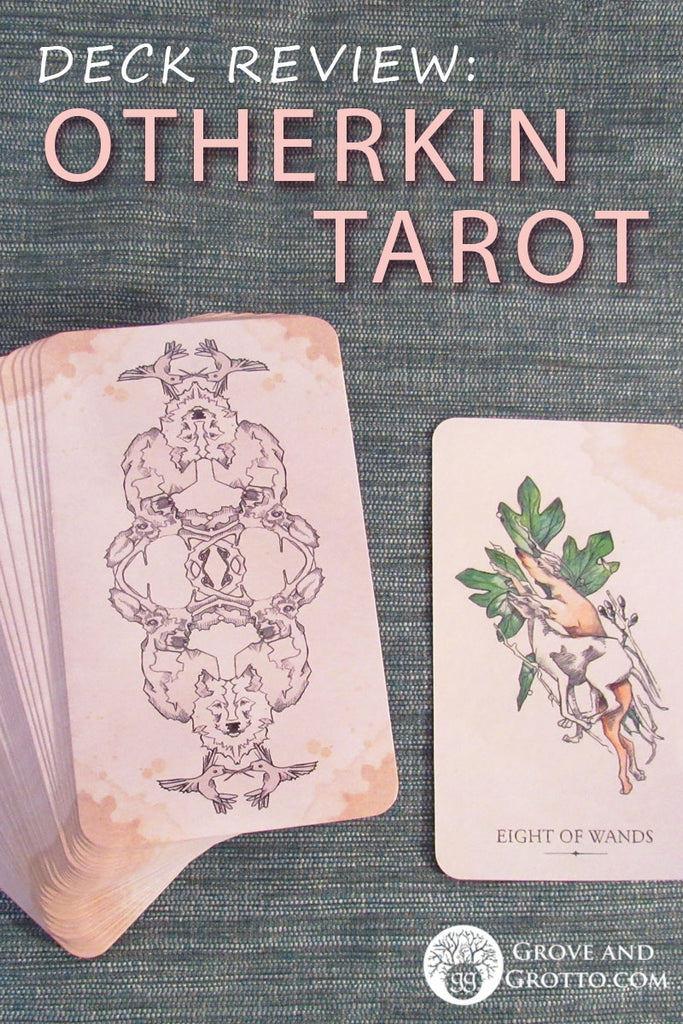
In the follow-up to 2016's excellent Linestrider Tarot, deck creator Siolo Thompson is still striding lines. This time, the barrier being teetered upon is the dividing line between traditional Tarot and avant-garde art deck.
Flipping through the Otherkin Tarot is like taking a trip through the looking glass. Every familiar element is countered by something completely unexpected. A wolf wields a hammer, a miniature knight rides a turtle, an octopus cuddles a snake. Welcome to the world of the Otherkin, where Tarot is still Tarot but everything else is just a little…different.
First Impressions
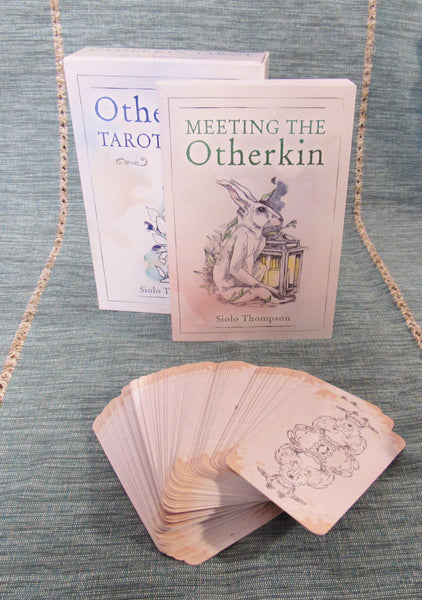
Visually, Otherkin Tarot is similar to Linestrider and to Thompson’s floral excursion, the Hedgewitch Botanical Oracle. The illustrations are fluid pen-and-ink drawings punctuated with light washes of hand-mixed pigment. Storybook critters are shuffled in with waifish magick-makers and elemental props.
It’s a distinctive and appealing art style. The palette is akin to Paulina Cassidy’s, but the lines are cleaner. These are some of the most beautiful decks on the market, hand-drawn gems in a field crowded by mediocre digital renderings. Thompson’s drawings are both contemporary and full of bygone storybook whimsy, the visual heir of Aubrey Beardsley and Beatrix Potter.
Otherkin Tarot comes packaged in a capacious box, white and glossy enough to give my poor camera fits. It’s the same large box that Llewellyn chose to package Thompson’s other decks.
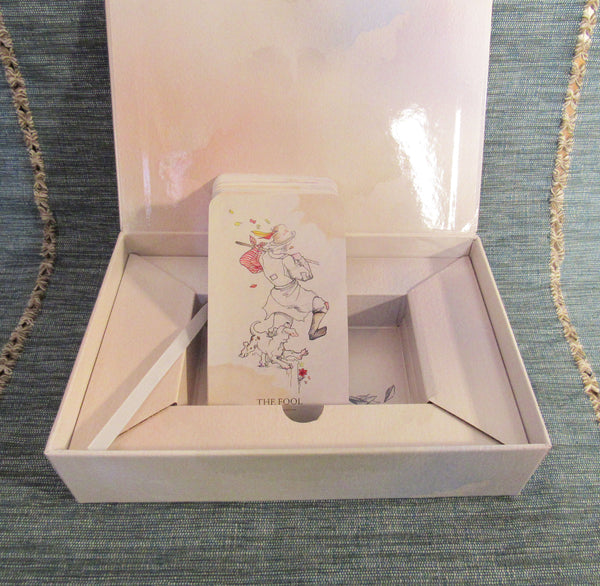
Personally, I’m not in love with this trend. These oversized Tarot kits have a shipping weight of 3 lbs—expensive!—and take up precious bookshelf space at home. However, the box houses a generous companion book (more on that later). And its ample proportions work well with her breezy art style.
The Cards
Otherkin Tarot is printed on decently thick stock with round corners and a high gloss. There are 78 cards only—no original or “bonus” cards. (My first clue that this is a purist’s deck in disguise.) They are tucked behind a perfect-bound guidebook (also on heavy, glossy paper) and a little white ribbon. Card titles and suit names are traditional: The Fool through the World, Cups, Pentacles, Wands, and Swords.

What’s new and different are the critters. This isn’t strictly an animal-themed deck—though there are at least as many animals as people. There are also, as the deck’s title implies, some creatures that are neither this nor that. A bear with human breasts nurses a cub (The Empress). A pensive cat clutches her silken dressing-gown (Queen of Wands). These are interspersed with more naturalistic animal portraits and the occasional human interloper.
Otherkin Tarot is borderless—though it stretches the definition of that word to the limit with its large swaths of white space surrounding every image. The drawings sit in the center of the card with only light splooshes of color to balance the composition. The effect is striking—like a perfect gourmet morsel on a big white plate—and I’m glad the publisher resisted the temptation to push these images into the corners. In interviews, Thompson as spoken of the negative space as room for the card to “breathe.” Besides looking good, I’m certain that the spaciousness of these cards will be an ideal match for imaginative and intuitive reading styles.
The Book
Otherkin Tarot is full of surprises, and one of the best surprises is the book, Meeting the Otherkin. Companion books for Tarot decks can be hit-or-miss. In this case, both the presentation and the contents of the book are substantial.
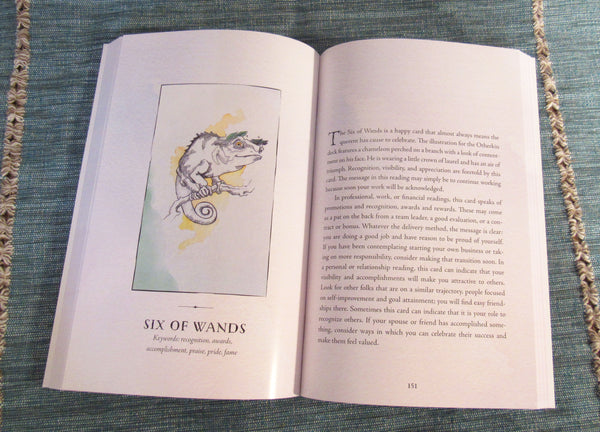
Descriptions of each card are accompanied by a large, full-color image, making it a breeze to look up cards during readings. The text is geared toward divinatory practice. Instead of a lengthy artist’s statement about the pictures followed by a bunch of generic keywords, we get thoughtful original perspectives on each, woven through and around their traditional meanings. There are also helpful asides for interpreting each card in the context of work, love, or spiritual growth.
The book is solid enough to stand on its own. I’d even venture to say it’s more lucid than many current beginner’s books on the Tarot shelf. Thompson says in the introduction that she wants the deck to be read (rather than merely collected) and it shows. The book that accompanies the Otherkin Tarot is accessible enough to be of value to beginners while still having plenty to teach the more experienced reader.
The World of the Otherkin
One of the consistent themes in Thompson’s work is liminality, the space between the human world and the natural world, the mystic and the mundane. For the hedgewitch, the linestrider, and the otherkin, this is where magickal power often resides. In a 2016 interview with Spiral Nature, Thompson says, “I also think many people occupy a liminal space between the animal and the purely human. For example, we frequently identify ourselves with a particular animal or animal spirit.”
In the Otherkin Tarot, this in-betweenness is expressed in the form of novel, often absurd anthropomorphic critters. I admit that some of the mash-ups put me off at first. The hawk-headed women of The Star and Nine of Cups raise insoluble questions about their digestive and reproductive habits. The maid-mer (reverse mermaid) in the Five of Cups also looks like an art school prank. These beings are so strange-looking that they distract from the content of readings, especially readings for clients.
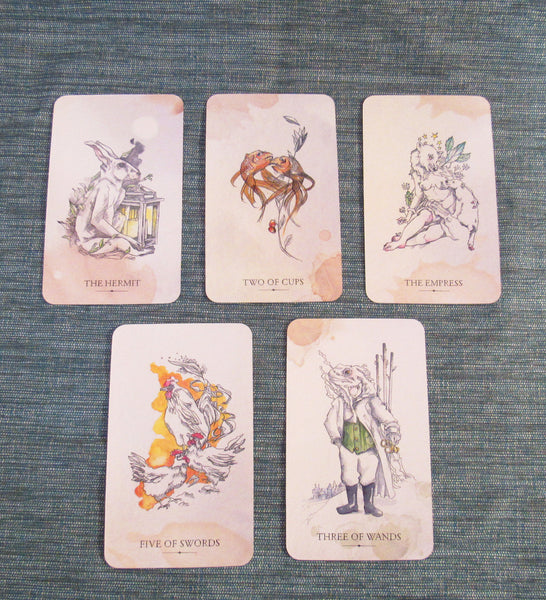
Otherkin Tarot confronts two massive artistic challenges. One: To deliver an eclectic, topsy-turvy vision that’s more than the sum of its parts. And two: To embody openness and ambiguity without stumbling into emptiness, like the blankness you sometimes find in the eyes of a goat or pigeon. Overall, it works. But Otherkin’s utility as a reading deck will depend on how closely the querent can identify with its odd menagerie.
Thompson has observed that featuring plants and animals so prominently is one way she strives to make her decks more inclusive. Indeed, the #tarotsowhite and queer critiques of the Rider-Waite-Smith deck (and its heirs) are something every artist and publisher must grapple with.
How do you create a socially progressive deck without throwing out more than a century of beloved Tarot artwork (not to mention the entire Western esoteric tradition, which often falls back on gendered language to explain occult concepts)? Right now, the industry’s answer seems to be “Put a Bird On It.” The massive pile of flora- and fauna-themed decks keeps growing, and the Otherkin Tarot is a recent standout of the genre.
Final Thoughts
When I bring a new deck into my small home (or into my store), I feel like I should be able to justify its presence. Why does this deck exist? What need does it fulfill that isn’t being met by another deck?
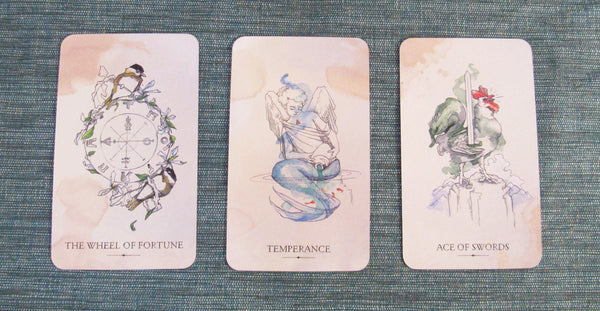
I found the Otherkin Tarot (and the accompanying book) to be beautiful, original, accessible, and deep. If I hesitated to adopt it upon its release, it’s only because I was still reading and enjoying 2016’s Linestrider Tarot, which Otherkin strongly resembles. (The follow-up came so fast!)
Both are accomplished works of Tarot art…but when pressed, I’ve got to say that Linestrider’s more human-centric approach works better for me, a human. Otherkin is thoughtful and easy on the eyes, but ultimately too offbeat to supplant its older sibling’s place on my bookshelf.
Otherkin Tarot is strongly recommended to beginning or advanced readers who are drawn to its quirky, minimalist style. If the creatures of the Otherkin speak to you, get your hands (or paws, or talons, or fins) on a copy, pronto.
Disclosure: I received a copy of the Otherkin Tarot from the publisher in consideration for a review. All opinions in this article are my own.
Where to next? Read more deck reviews, shop for decks, or check out the archive.
Share this post
- Tags: 2019, deck reviews, divination, tarot
